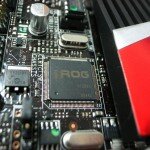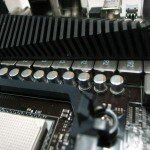Good things are brewing for AMD devotees, as the chip maker gets ready to introduce two eagerly-anticipated product lines. The pair should become new performance markers for PC buffs as top-end gear aimed at power users.
The first upcoming addition to the AMD roster are Thuban processers, also known as Phenom II X6, slated to launch next month. These add to existing Phenom II CPUs from AMD and feature up to six cores, pack a lot of muscle, and should be high on the wish lists of desktop overclockers. Simply being six-core CPUs makes the Thubans appealing, but their technology is also optimized for DX11 and a host of other innovations, so keep on the look out for them.
AMD is also bringing out a new chipset in support of Thuban, called the 890FX. It comes with the SB850 Southbridge and brings to the table numerous features worth noting.
The 890FX-SB850 works with DDR3 1333MHz RAM and slots CPUs into an AM3 socket. While all this is very exciting, it’s an AMD reference design. What consumers get are actual fabrications from motherboard makers, and guess who enters the fray at this juncture?
Aim for speed
ASUS Republic of Gamers has been on the case well in advance and has an amazing new board 100% dedicated to making the most of both the Thuban Phenom II X6 chip and its 890FX entourage.
This is the ROG Crosshair IV Formula, a performance platform that takes all the advantages of AMD’s reference design and packs them with a lineup of ASUS exclusives.
First of all, the new processors and chipset from AMD lend themselves nicely to overclocking, so the Crosshair IV Formula opens up the throttle with several OCing features. One example of this is the RAM, which on the Crosshair IV Formula can be easily overclocked to 2200MHz and comes with MemOK!, an ASUS technology that ensures systems boot with almost any kind of RAM.
ROG Connect and the iROG engine allow detailed overclocking and overvolting either on-board or remotely via USB. Users can tune their machines from a notebook and benchmark while tweaking for better results through lessened system load. ROG Connect also works as a monitoring interface, keeping an eye on the effects changes have on a system.
Those with less time or less experience in overclocking ought to enjoy Turbo Key II, a friendly and graphically appealing performance interface that automatically achieves 90% of what a professional overclocking station does. It takes a PC and runs it through a series of tests to determine the max gain possible with stable operation. This takes like 20 minutes tops and is very educational as the software reports back to users in detail.
Most of the overclocking features found on Crosshair IV Formula can work either from within the OS or by simply pressing a button on the board, with almost no other hardware attached. Perfect for system builders experimenting with various load outs.
Search for cores
Core Unlocker is possibly the coolest aspect of the Crosshair IV Formula design. It’s a software-hardware routine that activates dormant cores on CPUs, in this case tailored to the new AMD product. Very useful because AMD will likely release budget Thuban versions with less than six cores. Core Unlocker can run through these and force-activate extra cores at no cost to users. While results may vary, the one constant will be extra computing power and more room for overclocking, almost akin to upgrading a budget CPU to a more performance-minded model.
Too cool for school
Time to take this baby on the road. ASUS includes GameFirst with the Crosshair IV Formula, a bandwidth management director that lets users prioritize broadband access by application. Multiplayer gamers rejoice, as GameFirst takes charge of the motherboard’s networking capabilities to earmark connection speed for gaming, making online play smoother with less latency and lag. It does this even if other tasks, such as downloading, work in the background. The end result is a better, more efficient connection.
On the subject of speed, while AMD allows USB 2.0 on this new reference design, ASUS goes one up by including two USB 3.0 ports, which are much faster. This is before we even talk about the wealth of PCI Express 2.0 and SATA 6GB/s slots.
Cooling on the Crosshair IV Formula takes the form of custom crystal-shaped ROG heat sinks, plus a 10+2 phased VRM design that can take a lot of pressure from intense overclocking. As evident in the pics, Crosshair IV Formula has the looks to match its performance, with the trademark Republic of Gamers color scheme in residence.
The Crosshair IV Formula even adds 8+2 surround audio via SupremeFX to the basic AMD reference, rounding off what has to be the sexiest choice for AMD gamers and overclockers in quite some time.
Watch this space for more pics and info on the Crosshair IV Formula and new AMD Phenom II X6 as it becomes available!















